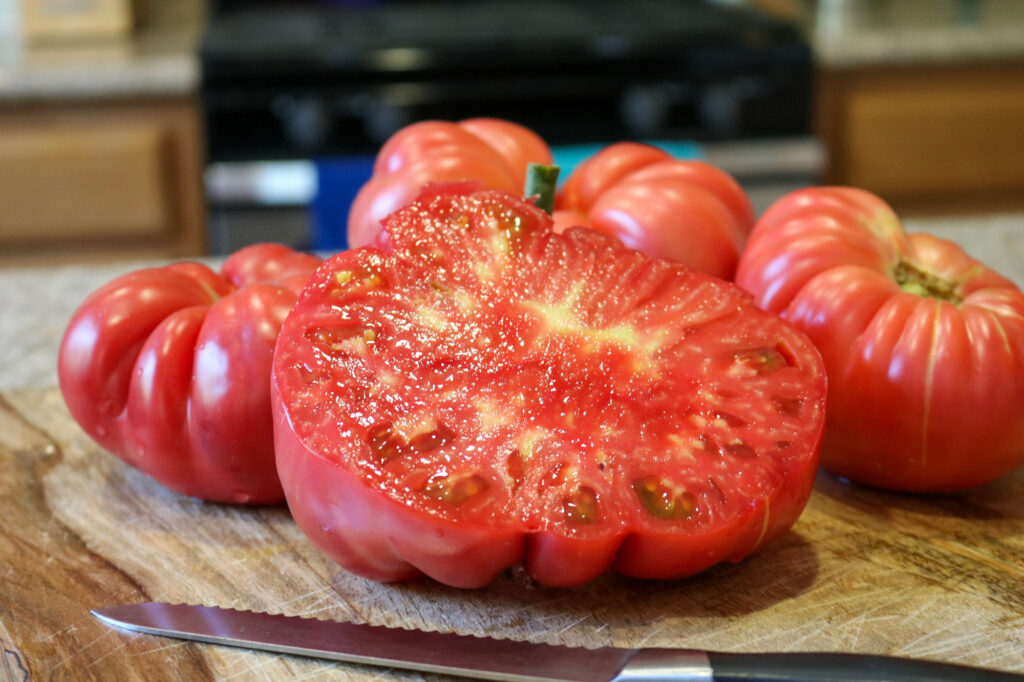Early blight
Signs and symptoms: Early blight typically appears on older foliage first as small brown lesions. As spots enlarge, concentric rings form in the center of the diseased area, resembling a bull’s-eye pattern. Stem lesions are similar in appearance and are capable of girdling the plant, especially those located at the soil line. On fruit, lesions maintain a similar appearance and, over time, will nearly envelop the fruit.
Prevention and treatment: Use resistant tomato varieties and pathogen-free seeds. Practice crop rotations, maintain proper soil nutrient levels and adequate plant spacing, and avoid wetting tomato foliage. Eliminate any volunteer tomatoes and weeds growing around the garden area. Apply an appropriate fungicide at the first sign of disease. For help choosing the proper fungicide, reach out to your local Extension office.
Verticillium wilt
Signs and symptoms: Early symptoms usually appear as yellow blotches on lower leaves that eventually spread upward, causing rapid yellowing of plants. Leaf veins will turn brown, and brown dead spots will appear on the leaves. Tomato foliage will eventually die and fall from the plants. Plants infected with verticillium wilt typically appear stunted in growth. Fruit will sometimes develop a yellow coloration and experience a decrease in yield.
Prevention and treatment: Use resistant tomato varieties and practice proper crop rotations. Verticillium is a soil-borne fungal pathogen. Remove all debris from infected plants out of the garden. Plants infected with this pathogen cannot be saved, so avoidance is the best option.
Late blight
Signs and symptoms: Late blight is a serious disease that worsens during periods of cool, wet weather. First signs of late blight are green to dark lesions with a water-soaked appearance that form on leaves. Lesions rapidly shift to brown coloration as the disease progresses. As the leaf spots enlarge, a white-colored mold will form around the margins of the spots on the underside of the leaves. Often, total leaf drop can occur within 14 days of symptom onset. Tomato fruit will develop shiny, leathery-brown lesions. During wet weather, the entire fruit may become covered by a white, fuzzy growth.
Prevention and treatment: Choose late blight-resistant varieties and certified disease-free seeds. When possible, site your garden where it will receive morning sun and avoid using overhead irrigation. Avoid using compost containing rotten, store-bought potatoes in your garden. Maintain proper spacing between plants, remove any volunteer tomato or potato plants, and eliminate neighboring weeds. If warranted, fungicide treatments can be used. For help selecting the right fungicide treatment, contact your local Extension office.



